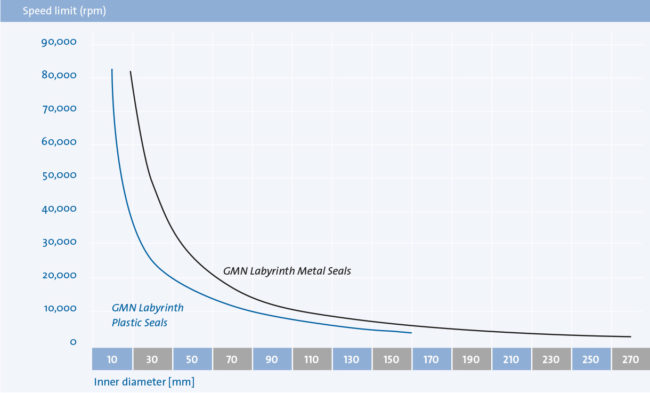Correct choice of the seal as well as customized design of the mating parts are the most important aspects for a successful application, but there is more. If a milling machine is stopped suddenly within a very short time, a temporary oil level could be created in front of the sealing gap.
The following questions should help to analyze your application from different points of view.
On request, GMN would be pleased to give advice based on our
decades of experience in order to optimize your individual solution.
Avoid heavy impact at standstill! This simple and free rule prevents impact on the seal during standstill.
Sealing air can improve the effectiveness of the seal, but the air consumption is relatively high. When supplied via the grooves in M design, the sealing air is relieved in both directions. There is a risk of the bearing drying out.
Protect the gap from heavy and direct impact with a centrifugal disk.
GMN non-contact seals are providing solutions for a wide field of applications. However, in certain cases the use of GMN seals is also limited.
The design of a GMN non-contact seal requires a gap between the outer and the inner ring. With this gap liquid levels and any difference of pressure could be reduced, but not sealed.
With increasing rotational speed the press-fit inner ring on the shaft has the tendency to lift off due to centrifugal forces (lift-off speed). Most applications are far below this speed limit.
In certain cases the speed limit could be increased with increased press fit. We recommend contacting a GMN engineer when you feel that this may happen in your application.

The maximum circumferential speed is (depending on the size) v = 35 – 60 m/s for GMN labyrinth metal seals and v = 45 – 70 m/s for GMN labyrinth plastic seals.